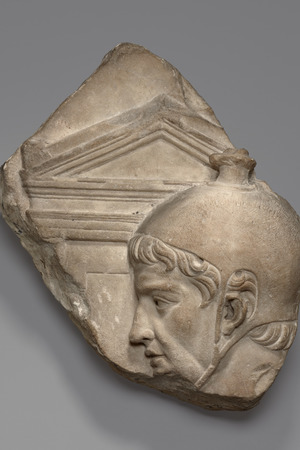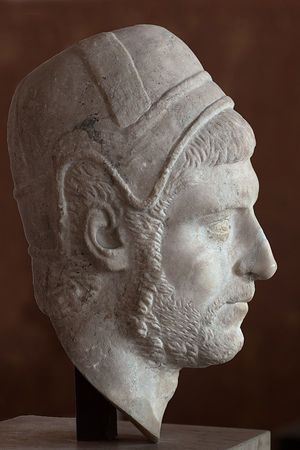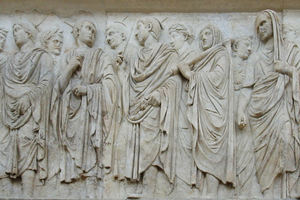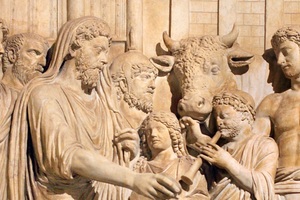Flamin
A flamen (Latin: flamines, singular flamen) was a priest in Ancient Rome whose life was dedicated to serving a particular god or deity.
The position of flamens, like many other cult officials, was lifelong. Among the flamens, three were considered senior: the priests of Jupiter, Mars, and Quirinus. Each of them was chosen from representatives of patrician families. There were also twelve junior flamens who were selected from plebeian families and served minor gods (such as Vulcan, Flora, etc.).
It is believed that the position of the three senior flamens emerged during the reign of Numa Pompilius. During the Imperial era, the existing 15 flamens were joined by flamens of deified emperors.
The role of the Flamen Dialis (priest of Jupiter) involved a large number of strict rules and taboos. For example, the foot of the bed on which the flamen slept had to be stained with dirt. When leaving the house, the flamen had to cover his head, refrain from riding horses, avoid touching raw meat, and so on.
One of the distinctive signs of flamens was a special headgear called the "apex" (Latin: apex - summit). It was a small cap made of olive bark. The right to wear the apex was exclusively held by flamens in Ancient Rome.
Julius Caesar and Nero were among the flamens at the beginning of their careers.
Types of Flamens
Flamens were categorized based on their affiliation with gods. Those who served the major gods were called flamines maiores, while those who served the minor gods were called flamines minores.
Flamines Maiores:
- Flamen Dialis, responsible for the cult of the supreme god Jupiter;
- Flamen Martialis, responsible for the cult of the god of war Mars. Prepared rituals before the start of wars and consecrated the legions;
- Flamen Quirinalis, servant of the cult of the god Quirinus. Responsible for the peaceful social aspects of Roman life.
Flamines Minores:
- Flamen Carmentalis, cult of the goddess Carmenta;
- Flamen Cerialis, cult of the goddess Ceres;
- Flamen Falacer, cult of the god Falacer;
- Flamen Floralis, cult of the goddess Flora;
- Flamen Furrinalis, cult of the goddess Furina;
- Flamen Palatualis, cult of the deity Palatua;
- Flamen Pomonalis, cult of the deity Pomona;
- Flamen Portunalis, cult of the god Portunus;
- Flamen Volcanalis, cult of the god Vulcan;
- Flamen Volturnalis, cult of the god Volturnus.







